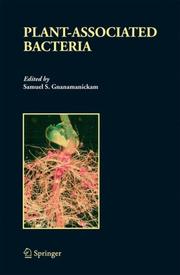| Listing 1 - 2 of 2 |
Sort by
|
Book
ISBN: 9781441960849 9781441960832 Year: 2011 Publisher: New York, NY Springer New York
Abstract | Keywords | Export | Availability | Bookmark
 Loading...
Loading...Choose an application
- Reference Manager
- EndNote
- RefWorks (Direct export to RefWorks)
There has been an increasing interest and emphasis on the sessile bacterial lifestyle biofilms since it was discovered that the vast majority of the total microbial biomass exists as biofilms. Leeuwenhoek first described the aggregation of bacteria in 1677, but it was only recently recognized as being important in chronic infection. In 1993, the American Society for Microbiology (ASM) recognized that the biofilm mode of growth was relevant to microbiology. This book covers both the evidence for biofilms in many chronic bacterial infections as well as the problems facing these infections such as diagnostics, pathogenesis, treatment regimes, and in vitro and in vivo models for studying biofilms. This is the first scientific book on biofilm infections, with chapters written by world- renowned scientists and clinicians. The intended audience of this book includes scientists, teachers at the university level, as well as clinicians. About the Editors: Thomas Bjarnsholt, Ph.D., Technical University of Denmark, Lyngby, Denmark Peter Oestrup Jensen, Dept. of Clinical Microbiology, Rigshospitalet, Copenhagen, Denmark Claus Moser, Ph.D., Dept. of Clinical Microbiology, Rigshospitalet, Copenhagen, Denmark Niels Hoeby, Dept. of Clinical Microbiology, Rigshospitalet, Copenhagen, Denmark
biofilm --- histologie --- General microbiology --- Histology. Cytology --- microbiologie --- bacteriologie --- cytologie --- Biofilms. --- Bacterial diseases.

ISBN: 128071638X 9786610716388 1402045387 1402045360 9781402045363 9781402045387 1402045379 Year: 2006 Publisher: Dordrecht Springer
Abstract | Keywords | Export | Availability | Bookmark
 Loading...
Loading...Choose an application
- Reference Manager
- EndNote
- RefWorks (Direct export to RefWorks)
This volume is developed on the broad theme of plant-associated bacteria. It is envisioned as a resource volume for researchers working with beneficial and harmful groups of bacteria associated with crop plants. The book is divided into two parts. Part I (9 chapters) on beneficial bacteria includes chapters on symbiotic nitrogen fixers, diazotrophs, epiphytes, endophytes and rhizosphere bacteria and deleterious rhizobacteria. Part II (8 chapters) consists of detailed descriptions of 8 genera of plant pathogenic bacteria: Agrobacterium, Clavibacter, soft-rot Erwinia, Pseudomonas, Xanthomonas, Ralstonia, Burkholderia and Acidovorax & Herbaspirillum. There is an opening chapter on the plant-associated bacteria survey, molecular phylogeny, genomics and recent advances. And each chapter includes terminology/definitions, molecular phylogeny, methods that can be used (both traditional and latest molecular tools) and applications.
Plants --- Plant-microbe relationships. --- Phytopathogenic bacteria. --- Soil microbial ecology. --- Mycorrhizas in agriculture. --- Microbiology. --- Agriculture --- Microbial ecology --- Soil ecology --- Bacteria, Phytopathogenic --- Plant pathogenic bacteria --- Pathogenic bacteria --- Phytopathogenic microorganisms --- Bacterial diseases of plants --- Plant-microbe interactions --- Microbiology --- Bacteriology --- Bacteria. --- Bactéries phytopathogènes. --- Crops, Agricultural --- Mycorhizes en agriculture. --- Plant Diseases. --- Plantes --- Relations plante-microbe. --- Soil Microbiology. --- microbiology. --- Microbiologie. --- Botany. --- Plant diseases. --- Bacteriology. --- Plant genetics. --- Plant Sciences. --- Plant Pathology. --- Plant Genetics and Genomics. --- Botanical science --- Phytobiology --- Phytography --- Phytology --- Plant biology --- Plant science --- Biology --- Natural history --- Botany --- Communicable diseases in plants --- Crop diseases --- Crops --- Diseases of plants --- Microbial diseases in plants --- Pathological botany --- Pathology, Vegetable --- Phytopathology --- Plant pathology --- Vegetable pathology --- Agricultural pests --- Crop losses --- Diseased plants --- Plant pathologists --- Plant quarantine --- Genetics --- Pathology --- Diseases and pests --- Diseases --- Wounds and injuries --- Plant science. --- Plant pathology. --- Floristic botany
| Listing 1 - 2 of 2 |
Sort by
|

 Search
Search Feedback
Feedback About UniCat
About UniCat  Help
Help News
News